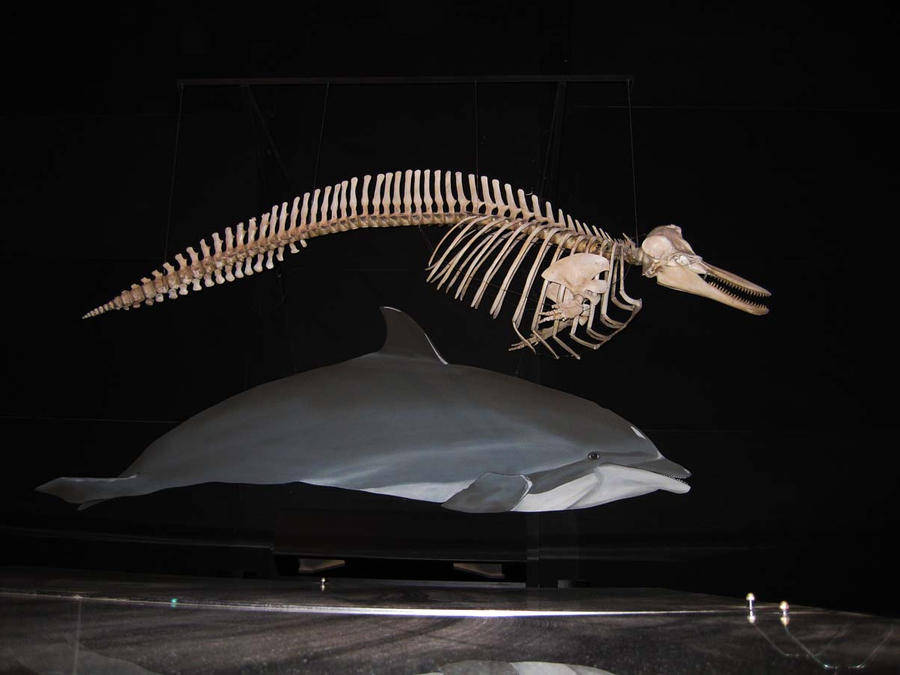
Dolphins, often considered one of the most intelligent and playful marine animals, possess an impressive anatomy that allows them to maneuver the waters with impressive agility.
As one of the more fascinating elements of their physiology, dolphin skeletons stand out as remarkable marvels of evolution. In this blog post we’ll investigate what type of skeleton do dolphins have, looking at its composition, adaptations and differences from human skeletons.
Table of Contents
What Type Of Skeleton Do Dolphins Have?
Dolphins share similar bony structures as any other mammal. However, theirs have evolved specifically for aquatic lifestyle.
Notable characteristics of a dolphin skeleton include:
* Dolphins possess compact skulls with parabolic dish shapes to accommodate for the space needed by their echolocating melon organ.
* They also possess flexible spines which enable efficient swimming as well as quick changes of direction.
* Flattened-out pectoral fins used for steering. These pectoral fins share many of the same skeletal elements found in human arms; however, their bones are shorter and wider.
* Dolphins possess dorsal fins and tail flukes made of tough fibrous connective tissue without bones for stabilization purposes, while their tail flukes serve propulsion purposes. The dorsal fin helps stabilize its body while its tail flukes propel forward motion.
* Dolphins have no hind limbs; instead, they propel themselves with their flukes alone through the water. There may still be vestiges of pelvic girdles in certain species of dolphins.

Does A Dolphin Have An Endoskeleton Or An Exoskeleton?
Dolphins possess an endoskeleton, meaning their bones reside inside of their bodies rather than outside as in an exoskeleton.
Endoskeletons are more prevalent than exoskeletons in animal kingdom. Most vertebrate, such as mammals, reptiles, birds and fish possess endoskeletons while invertebrate such as insects spiders and crustaceans have exoskeletons more frequently.
Endoskeletons offer numerous advantages over exoskeletons. One such advantage is their ability to grow with the animal; exoskeletons must be shed periodically in order for the animal to expand. Furthermore, endoskeletons provide more support for larger creatures like dolphins.
Are Dolphins Cartilaginous Or Bony?
Dolphins possess bony skeletons. As opposed to cartilaginous skeletons primarily composed of cartilage (such as those found in sharks or rays), dolphins’ bony structures provide support and structure to their bodies, helping them move efficiently in water environments.
Do Dolphins Have A Cartilage Skeleton?
No, dolphins do not possess cartilage skeletons like other mammals do; rather they possess bony structures similar to all mammals.
Cartilage is a flexible tissue found throughout the body, such as joints, nose, and ears. Bone is harder and provides support and structure for our bodies.

What Are The Skeletal Adaptations Of A Dolphin?
Dolphins, like other marine mammals, possess various adaptations that enable them to thrive in their aquatic environment:
Streamlined Body: Dolphins possess an aerodynamic body shape designed to minimize water resistance and make movement through the water more effortless, thus optimizing swimming efficiency. Their bodies are optimized for efficient swimming.
Limb Adaptations: Dolphins have modified front limbs called flippers which they use for steering and stabilizing while swimming. Furthermore, dolphins lack hind limbs which further reduce drag in the water.
Vertebral Column: Dolphins possess a flexible vertebral column that allows them to make quick and agile movements in the water. Their spine isn’t rigid either, enabling them to twist and turn more freely than most fish species.
Skull Adaptations: Dolphins possess a special skull to house their echolocation system, which they use to navigate and hunt underwater. Their lower jaw bones transmit soundwaves which bounce off objects around them to help dolphins perceive their environment more accurately.
Ribs and Sternum: Dolphin ribs do not connect directly to their sternum (breastbone), as with land mammals. This allows their body to deflate slightly under deep water pressure without risk of injury. Furthermore, their sternums do not fuse together providing further flexibility and provide further safety.
Density Control: Dolphins possess sophisticated adaptations for controlling their buoyancy. By altering how much air enters their lungs and controlling body density, dolphins are able to either float or dive as necessary.
How Many Bones Does A Dolphin Have?
Dolphins typically possess approximately 208 to 215 bones depending on the species; this figure may differ slightly between individuals and between species.
Like other mammals, dolphins possess a skull, vertebral column (spine), ribs and limb bones – though the exact count can differ slightly among different individuals and species.

Bottlenose Dolphin Skeleton
The bottlenose dolphin, an extremely well-studied species, boasts an outstandingly well-documented skeleton. This structure illustrates how its adaptations allow it to live life in the ocean – emphasizing its sleek body and powerful tail for fast swimming.
See Also: How Long Do Bottlenose Dolphins Live In Captivity?
Dolphin Skeleton Vs Human Skeleton
Dolphins and humans both belong to the mammalian species. However, due to different environments they both possess very unique skeletons. Here is a comparison table between their skeletons:
| Feature | Dolphin | Human |
| Number of bones | 300 | 206 |
| Hind limbs | No | Yes |
| Pectoral fins | Flattened out and used for steering | Arms with hands |
| Dorsal fin and tail flukes | Made of tough fibrous connective tissue | No dorsal fin or tail flukes |
| Skull | Compact with a parabolic dish shape | Not compact and does not have a parabolic dish shape |
| Spine | Flexible | Not as flexible |
Do Dolphins Have Limbs?
Dolphins possess modified limbs known as flippers that have developed from their land-dwelling ancestor’s arms over time. These adaptations allow dolphins to navigate underwater.
Although dolphins lack limbs like those found on land animals, their flippers serve multiple functions including steering, stabilization and manipulating objects in their environment.
Frequently Asked Questions (FAQs)
What Type Of Skeleton Do Dolphins Have At Birth?
Dolphins, like other mammals, have an endoskeleton at birth. When dolphins are born, they already have a fully formed internal skeleton made of bones and cartilage, just like adult dolphins.
What Type Of Skeleton Do Dolphins Have In Their Mouth?
Dolphins have teeth embedded in sockets within their jawbones, just like humans and many other mammals. Their tooth sockets are part of their overall endoskeleton, which means that the bones supporting their teeth are inside their bodies.
What Type Of Skeleton Do Dolphins Have On Their Head?
Dolphins have a skull, which is part of their endoskeleton, on their head. The skull protects their brain and sensory organs, supporting their vital functions.
Conclusion: What Type Of Skeleton Do Dolphins Have
Dolphin skeletal structures are testaments to evolution. With their complex endoskeleton and unique adaptations, dolphins are specially equipped for life in aquatic habitats where they thrive.
Studying dolphin skeletons not only gives us more knowledge of dolphin biology but also expands our awareness of all life on Earth and their interdependence.
As we seek to discover more of nature’s mysteries, the dolphin’s skeleton stands as a symbolic representation of its incredible diversity and complexity beneath the waves.

Mr. Das, a certified pharmaceutical scientist, holds a Bachelor of Science in Pharmaceutical Sciences and passionately contributes to dolphin conservation as a member of the committee in Bangladesh.


